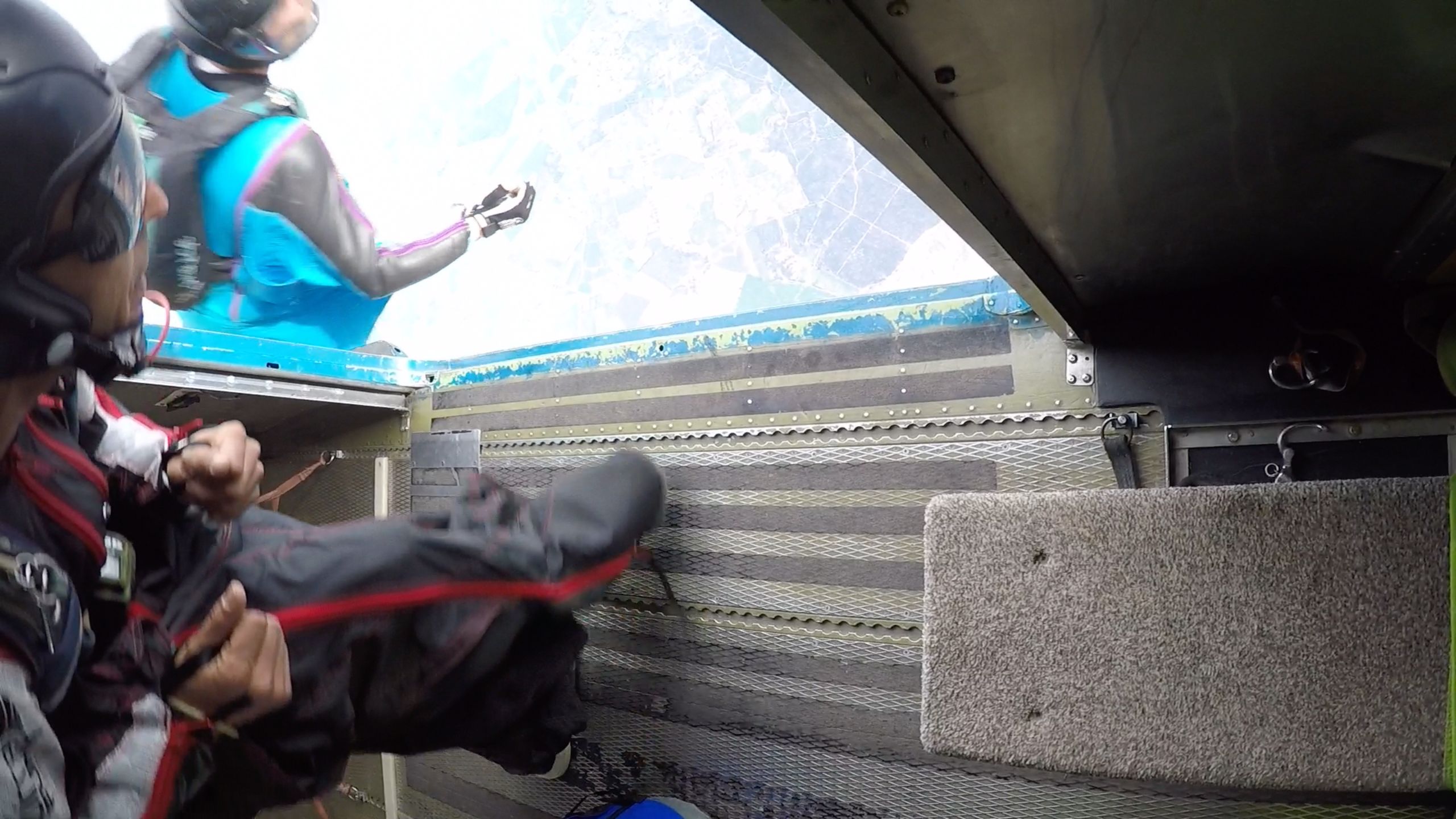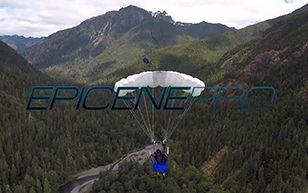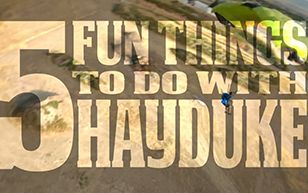WS Progression 2: Exits
Exit Order for Wingsuits

While some DZs may have their own special rules for their own special reasons, the consensus among WS pros is that there are almost no exceptions to this rule: Wingsuits Exit Last. Vertical, belly, tandems, etc… that all makes sense, right? But what about high-pullers?
Since this seems to be the only common source of confusion about exit order and wingsuits, let's break it down:
First, we plan the exit order for the successful execution of each group's plan. It's the same for wingsuits and high-pulls. Wingsuits exit last, because of their low vertical speed and their extensive horizontal reach. It is very easy for a wingsuit to exit and remain under and near to the aircraft for several seconds.
If a high-puller is pulling “right out the door”, and therefore still wants to get out last, they may not understand that there is still a high likelihood that their opening will continue right into the wingsuit's path of flight. And if the high-puller exits last and takes even a slightly longer delay than they announced, they could end up cannonballing right through the beginning of the wingsuit flight path, and then also become a dangerous obstacle under parachute for wingsuits on the load, even if there are multiple passes.
If a high-puller is concerned with wingsuits flubbing their exit and turning back down jump run, then like every other potential conflict on a load, the best thing that everyone can do is stick to their plan. Like vertical flyers pledge to execute a vertical skydive, high-pullers must actually execute their high pull at the stated altitude, and wingsuits must fly their intended plan inside the established lanes. With adequate exit separation, it is exceedingly difficult for a wingsuit to exit, complete a 180, and collide with a normally loaded parachute. The most likely scenario is that the wingsuits exit down jump run, begin their flight in the direction of jump run, and their vertical speed (sink rate) will put them well below the high-puller before their horizontal planes can cross.
One reasonable exception would be experienced CRW jumpers who are exiting with a large enough offset (exit separation) to create distance between themselves and wingsuits. However, in short, the lowest chances of collision between wingsuits and high-pulls are when wingsuits exit last, with normal exit separation.

Multiple Passes
Whether or not an extra pass becomes necessary or recommended depends on the airspace that is available at your DZ, and the number of wingsuit and tracking groups on the plane. If your DZ has two established lanes of flight, and hopefully two established parachute opening “zones” (one opening zone for each lane and group), then there should only be two groups per pass. There are very few DZs on Earth where more than three groups can exit and fly safely back to the DZ.
Organize the wingsuit groups on each pass in terms of vertical speed - conventional wisdom states smallest suits first, biggest suits last, but never assume that big suits will be flying slowly because they could be on a high speed angle-style dive, in which case they may need to exit before small suits.
Let's look at a possible example, which is surprisingly common at dropzones with a lot of experienced wingsuiters:
An Otter load is manifested with eleven wingsuit pilots in four groups. Also on the plane are a four-way belly group, three freeflyers, an AFF level 6, and a tandem. Wow, full load, sure wish those wingsuits would scrunch up, we're missing a seat, someone sit up front, and hey Todd Davis would you please exhale and think skinny thoughts? Thanks. Regardless of how many passes there will be, and it looks like at least two, the wingsuits will be exiting last so all of them will get on first.
1st Pass
Non-wingsuit skydivers exit as per normal, with tandem last.
The four wingsuit groups are split up like this, and loaded in reverse order:
2nd Pass
If you jump at a large DZ, or small DZ, it is worth talking to whoever is responsible for coordinating jump run for wingsuits. There are a variety of factors at play, and it’s not as simple as reducing the indicated airspeed of the aircraft. Power settings, deck angle, and rate of descent all come into play. It’s worth learning about. For more info, see: https://vimeo.com/230048754

Exiting the Plane: Thinking About The Relative Wind
Wingsuit exits are firstly about the tail of the aircraft. Stability, navigation, and a successful approach to the group are the subsequent priorities. Before exiting, you should be thinking about (in order) the tail, your stability relative to the group, and finally your own personal stability. Please note that your personal stability is third priority here - it’s more important to not cause a plane crash or a mid-air collision than it is to have a comfortable and stable exit.
Most discussion regarding proper exit posture centers around surface area of your arm and leg wings, which is important. But as suits have evolved, planforms have extended the arm wing into areas that cannot be fully “closed” simply by restraining your arms. What this means is that our good habits need to evolve “beyond closure”, and include angle of attack (AoA) with regard to the relative wind and prop blast.
When exiting the plane, be conscious of the fact that the higher your AoA, the more you will be pushed up and back, in the direction of the tail. Particularly in intermediate and advanced wingsuits, closure + low AoA is important. Think of how a penguin slides into water, and imagine yourself sliding head first into the relative wind instead of belly-flopping against it.

An exit with the proper AoA and minimum surface area presented (arm and leg wings truly and properly closed) to the relative wind is unlikely to result in a tail strike or an unstable exit - and as a bonus, you’ll be flying sooner and therefore joining the formation sooner.

Thought Exercises:
- Step into the wind: Imagine stepping into hurricane force winds. How do you position yourself to brace against it? Do you open your arms and look up, hitting it with your chest? Or do you lean forward, pushing the top of your head into the blast of wind? The latter is true, and this is how we should be approaching the relative wind and prop blast when exiting the aircraft: head first, top of head pushing into the flow, bracing against it.
- Pushing into waves: Imagine pushing out into ocean waves. The technique is to push your head into the waves, bracing against the onsloaught of fluid flow. Air and water are the same - don’t let the waves smash you back into the tail of the plane.
- Diving penguin: Think of a penguin, diving into shallow water, head first, parallel with the surface.
Common Mistakes
Opening arm wings too soon
If you don’t know where your hands are, your arm wings could be open. Every instructor has a different technique, but most of them involve an exercise to increase awareness of your arm position. If you can feel your hands grabbing another part of your suit in a wings-closed posture, then you are less likely to make an error in proprioception, or limb-awareness, which could result in an open wing.
Losing awareness of aircraft tail
If you can’t see the tail of the aircraft, you might not be past it: Advice varies, but most advice includes training for an awareness of the aircraft. If you have had a close call, or want an exercise to help prevent tail strikes, think about watching the tail clear you - maintain good posture and AoA until you watch the tail pass you, when you know it’s safe to open up.
Jumping up
Don’t! A good wingsuit exit never ever involves jumping up. There is never any reason to jump up out of the door. Dive out and down, if anything. If you are having a hard time with this, imagine what it feels like to put your hand on a low fence and swing your legs over it. From a low position, put your right hand (if it’s a left side door) on the floor in the door, and swing your legs out as you exit with the top of your head (and spine axis) pointed into the relative wind. This should keep your torso more level to the relative wind, and prevent any upward exit tendencies.
Losing awareness of aircraft settings
Know what proper wingsuit exit conditions feel like, sound like, and look like. Check for them before exiting. This varies with aircraft type, but in general: Turbine power should be reduced / cut, flaps should be at least partially down (varies with aircraft), airspeed should be reduced, deck angle should be level, pilot should be aware of wingsuits ready-to-exit.
Brain Farts
Before exiting, run a quick checklist:
- Aircraft Settings
- Spot
- Be the Penguin
- Dive Out and Down
- Watch the Tail Clear
- Flow with Group Formation Approach
Write it on your hand, if you need to!
Wingsuit Deployment Series
This article is one of a 4-part series by Matt Gerdes and Taya Weiss on Wingsuit Progression. Here are links to the other articles:










